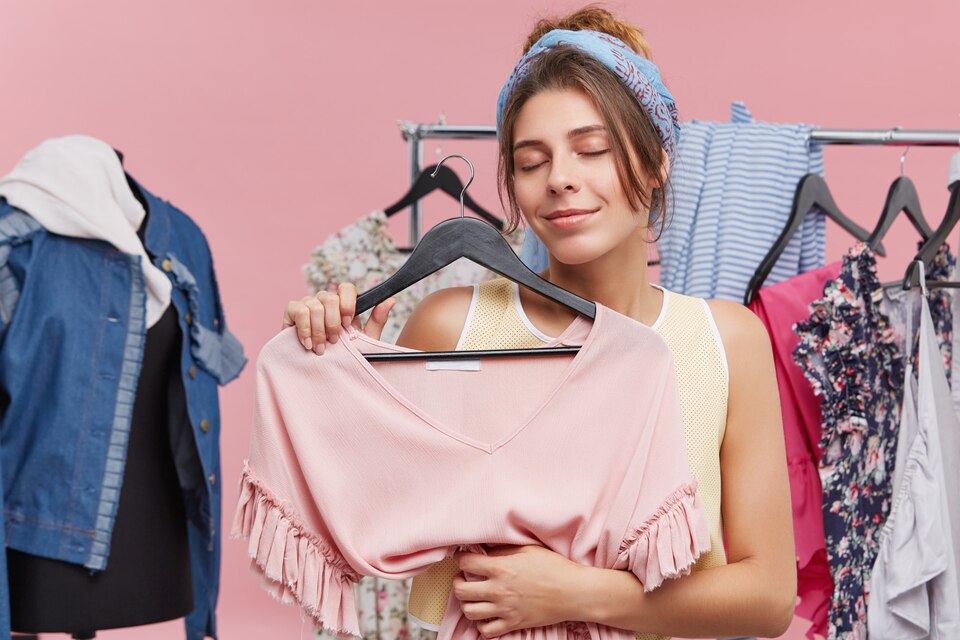Choosing The Right Fabrics: A Guide To Comfort And StyleSelecting suitable fabrics is a pivotal aspect of creating a wardrobe that combines comfort with style. The fabrics you choose can significantly impact how your clothing feels and looks, making it essential to understand the nuances of different materials. This guide explores the world of fabric choices, the various types, their properties, and how to strike the perfect balance between soothe and style.
Understanding Fabric Types
Natural Fabrics
⦁ Cotton: Known for its breathability and softness, cotton is a versatile choice for various climates. Its moisture-wicking properties make it comfortable in hot weather, while its insulation keeps you warm in colder months. Cotton garments often have a crisp, clean appearance, making them flawless for casual and formal wear.
⦁ Linen: When it happens to stay cool in hot weather, linen takes the crown. Its natural fibers promote airflow and moisture absorption, keeping you comfortable in high temperatures. While linen does wrinkle easily, its relaxed and breezy look is perfect for relaxed, casual outfits.
⦁ Wool: Wool is renowned for its insulating properties, making it an excellent choice for cooler seasons. It’s not only warm but also breathable, preventing overheating. When properly cared for, wool garments can last years and add luxury to your wardrobe.
⦁ Silk: For elegance and sophistication, silk is unbeatable. Its smooth, lustrous surface drapes beautifully, making it perfect for special occasions. Silk’s natural temperature-regulating properties also provide comfort in warm and cold weather, and its gentle, hypoallergenic nature suits sensitive skin.
⦁ Hemp: Sustainability meets durability in hemp fabric. Hemp proliferates with minimal water and pesticides, making it an eco-friendly choice. It’s strong, breathable, and naturally resistant to mold and UV rays. Hemp garments have a unique, earthy texture, making them a stylish choice for those who value environmental responsibility.
Synthetic Fabrics
⦁ Polyester: Polyester is known for its durability and resistance to wrinkles and shrinking. It’s a popular choice for activewear and casual clothing. While it may not be as breathable as natural fibers, it’s excellent for moisture-wicking and quick-drying, making it ideal for workouts.
⦁ Nylon: Nylon is strong, lightweight, and resistant to abrasion. It’s commonly used in outdoor and sportswear due to its durability. Nylon garments are known for their moisture-wicking properties, making them comfortable during physical activities.
⦁ Spandex: Spandex (or elastane) is rescued when stretch is essential. It adds flexibility and comfort to clothing, allowing for ease of movement. Spandex is often blended with other fabrics like cotton or polyester to create stretchy, form-fitting garments.
⦁ Rayon: Rayon, a semi-synthetic fiber, balances affordability and versatility. It can mimic the texture and appearance of natural fibers like silk, making it a budget-friendly choice for stylish outfits.
⦁ Acrylic: Acrylic is a lightweight, warm synthetic fiber often used in sweaters and blankets. It’s an excellent choice for those seeking warmth without the weight of wool. Acrylic garments are easy to care for and come in various colors and patterns.
Factors Influencing Fabric Choice
Several factors significantly influence the choice of fabric in fashion. These factors are pivotal in determining the comfort and style of clothing:
⦁ Climate and Season: The weather plays a crucial role in fabric selection. Lightweight, breathing fabrics like cotton and linen are perfect for hot summers, while wool and heavier textiles provide warmth in colder seasons.
⦁ Purpose and Occasion: The intended use of the clothing matters. Workwear may demand durable fabrics like denim, while formal occasions call for elegant materials like silk or velvet.
⦁ Comfort and Skin Sensitivity: Individual comfort preferences and skin sensitivities influence fabric choices. Some prefer soft, hypoallergenic fabrics like organic cotton, while others prioritize texture and warmth.
⦁ Care and Maintenance: Fabric care requirements are essential. Easy-care fabrics like polyester suit those with a busy lifestyle, while delicate materials like silk may demand more attention.
The Intersection of Comfort and Style
⦁ Texture and Feel: The texture of a fabric can greatly influence comfort and style. Smooth and silky fabrics like silk exude elegance, while textured fabrics like tweed or corduroy add depth and character to your attire. Consider tactile and visual aspects when choosing the right texture for your outfit.
⦁ Color and Pattern: Fabric choices play a pivotal role in the color and pattern of your clothing. Vibrant and bold colors can make a statement, while subtle hues convey understated elegance. Patterns, whether classic stripes or bold florals, express your style. Balance your fabric choices with colors and patterns that align with your fashion vision.
⦁ Fit and Silhouette: How a fabric drapes and molds to your body is essential for achieving the perfect fit and silhouette. Flowing fabrics like chiffon create a soft, feminine look, while structured fabrics like denim offer a more tailored appearance. Understanding how fabric behaves regarding drape and shape is critical to achieving your desired look.
Sustainable Fabric Choices
⦁ Eco-friendly Fabrics: The fashion industry is increasingly embracing eco-friendly fabrics. Organic cotton, Tencel (made from sustainable wood pulp), and recycled polyester are just a few models. These choices reduce the environmental impact of clothing production and align with the values of sustainability.
⦁ Ethical Considerations: Beyond sustainability, ethical considerations are essential when selecting fabrics. Consider the labor practices and working conditions involved in fabric production. Supporting brands and materials that prioritize fair labor practices and ethical sourcing ensures your fashion choices have a positive impact.
What makes linen an ideal choice for hot weather?
Linen’s natural fibers allow for excellent airflow and moisture absorption, keeping you cool and comfortable in hot weather. Its breathable properties make it a top choice for summer attire.
Are synthetic fabrics like polyester suitable for workouts?
Yes, activewear often uses polyester due to its durability, moisture-wicking, and quick-drying properties. It keeps you comfortable during workouts by efficiently managing sweat.
How can I balance style and sustainability in my fabric choices?
Consider fabrics like organic cotton, Tencel, or recycled materials to balance style and sustainability. These options offer eco-friendly alternatives without compromising on style.
Can fabric texture affect the comfort of clothing?
Absolutely. The texture of a fabric can impact how it feels against the skin. Smooth fabrics like silk feel luxurious, while textured fabrics may offer more warmth but might be less soft.
What should I consider when choosing fabric patterns for my outfits?
Consider your style and the occasion. Vibrant patterns can add excitement, while subtle patterns offer a more understated elegance. Match the pattern to the mood you want to convey.
Conclusion
Choosing the suitable fabrics for your clothing is a nuanced art that balances comfort and style. Understanding the properties of different fabric types, considering the climate, occasion, and ethical aspects, and paying attention to texture, color, and fit are all crucial steps. You can elevate your fashion game by making informed fabric choices while ensuring comfort and making environmentally conscious decisions. In fashion, the suitable fabric can genuinely make all the difference.



